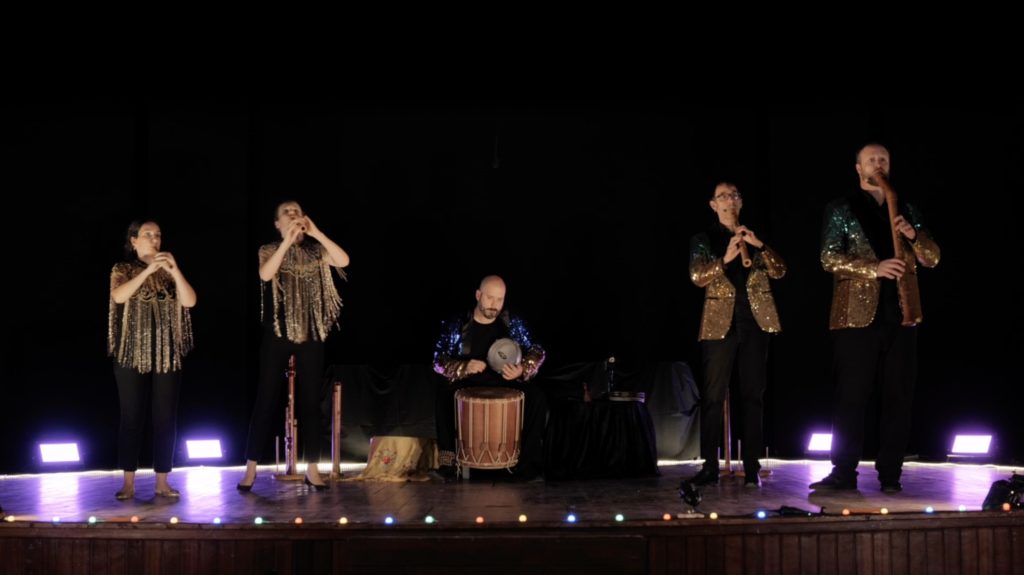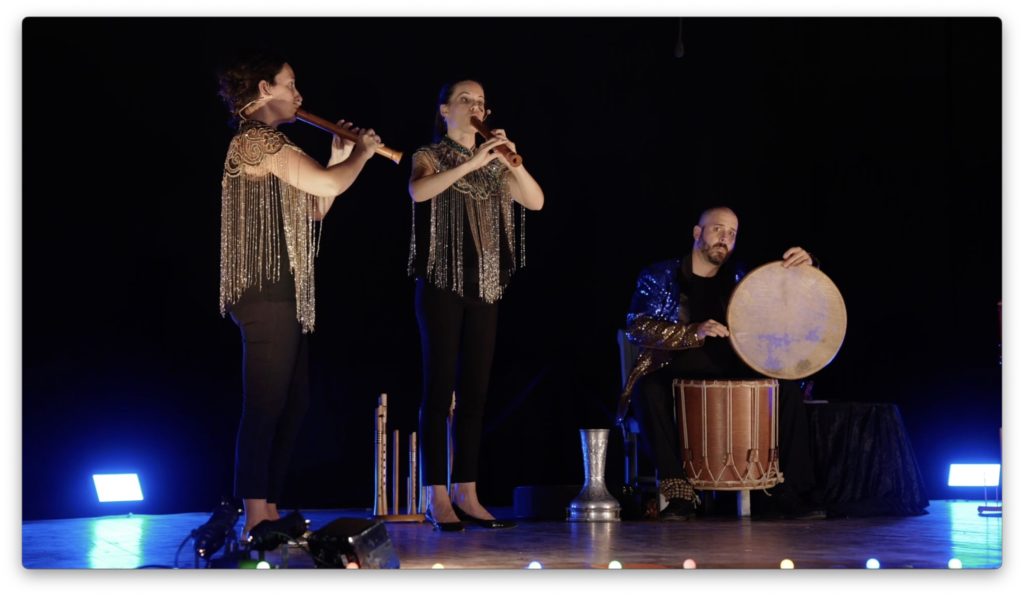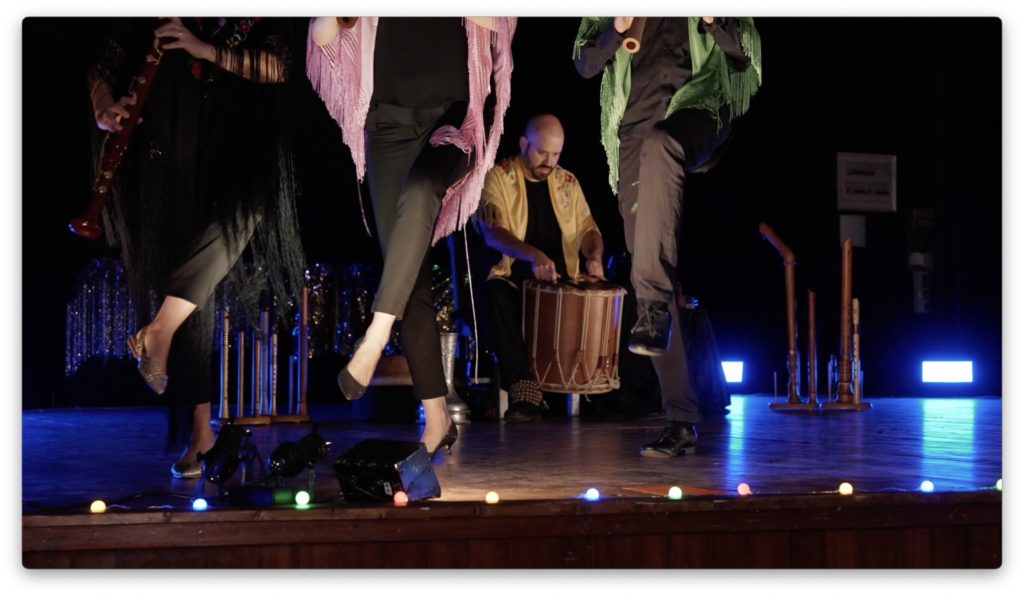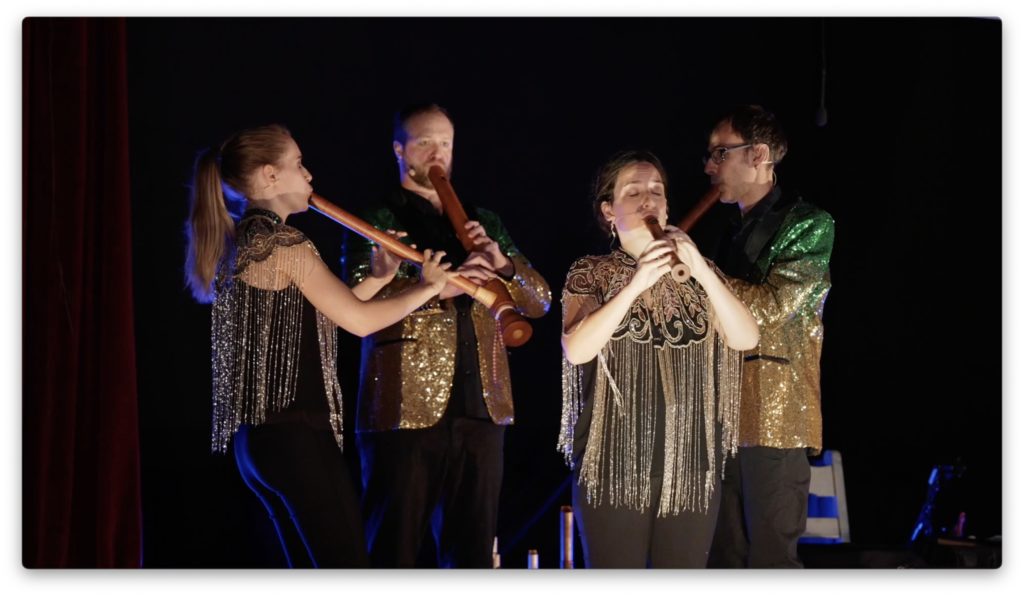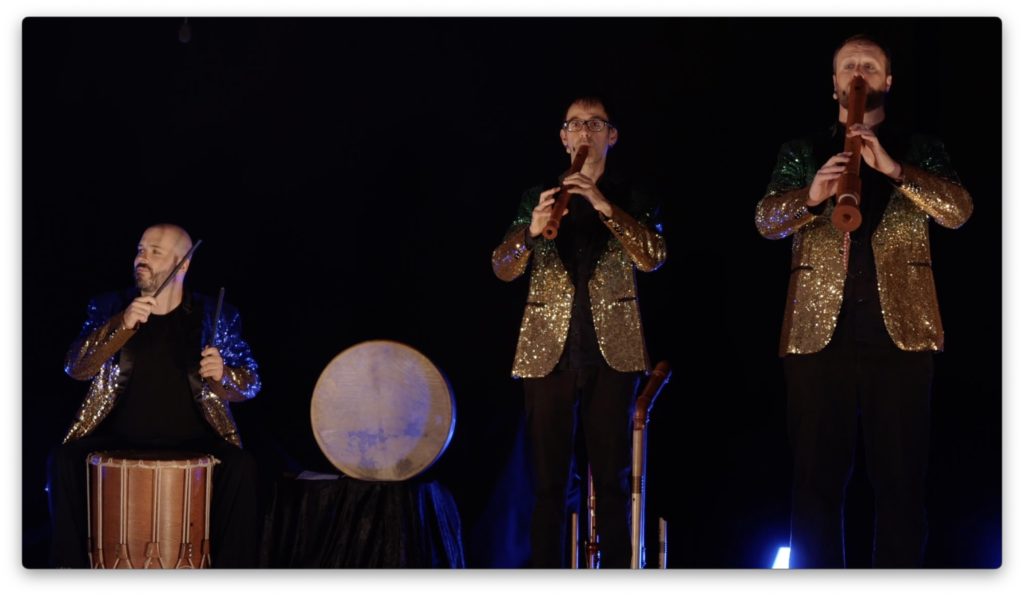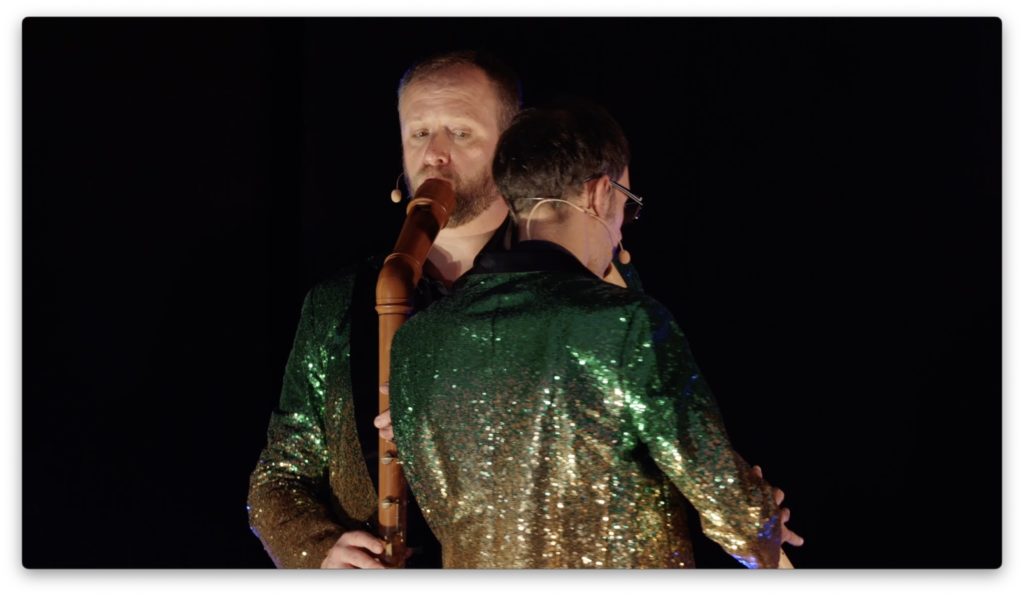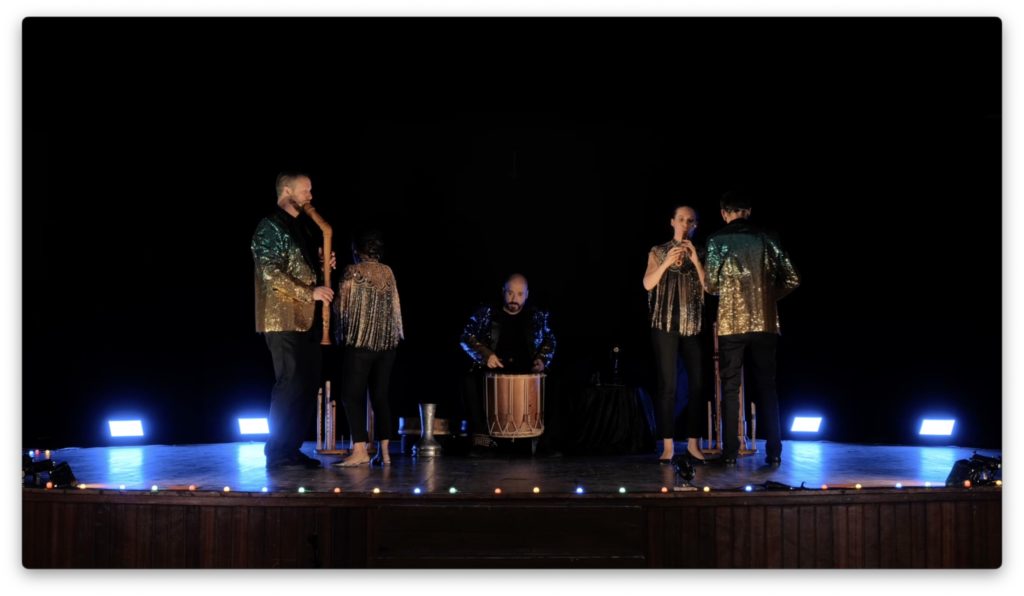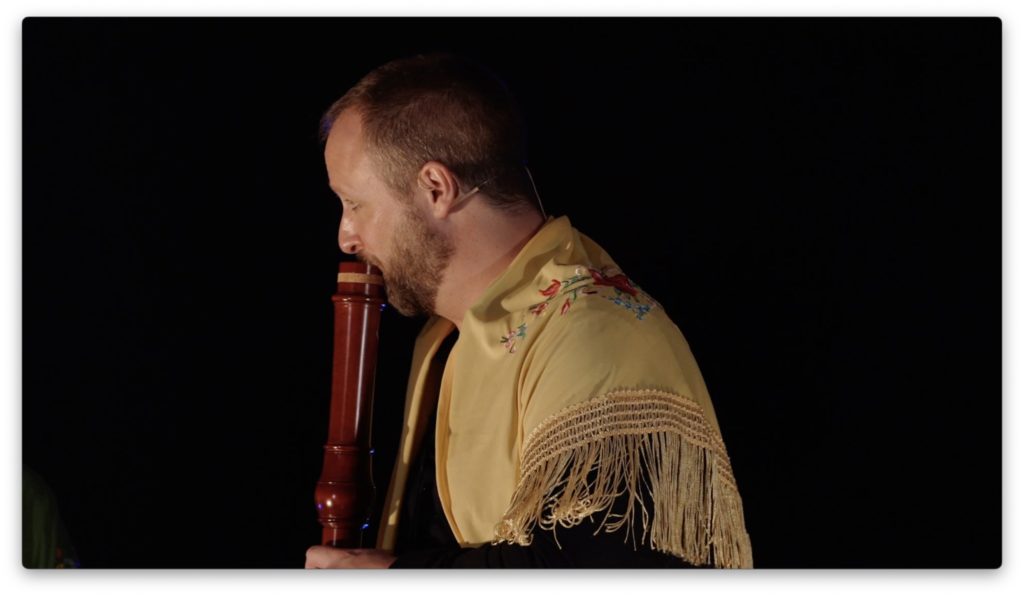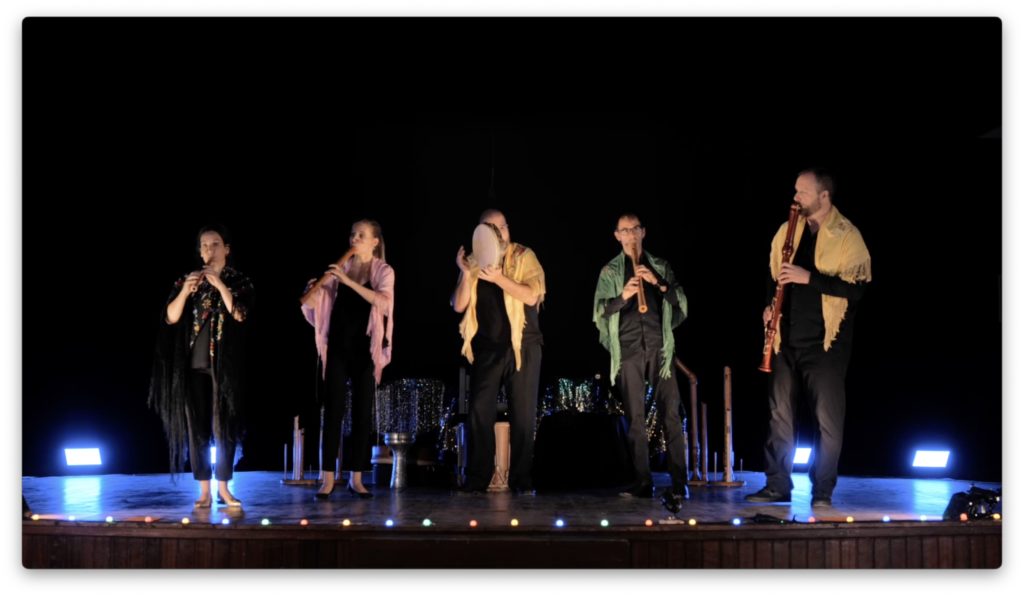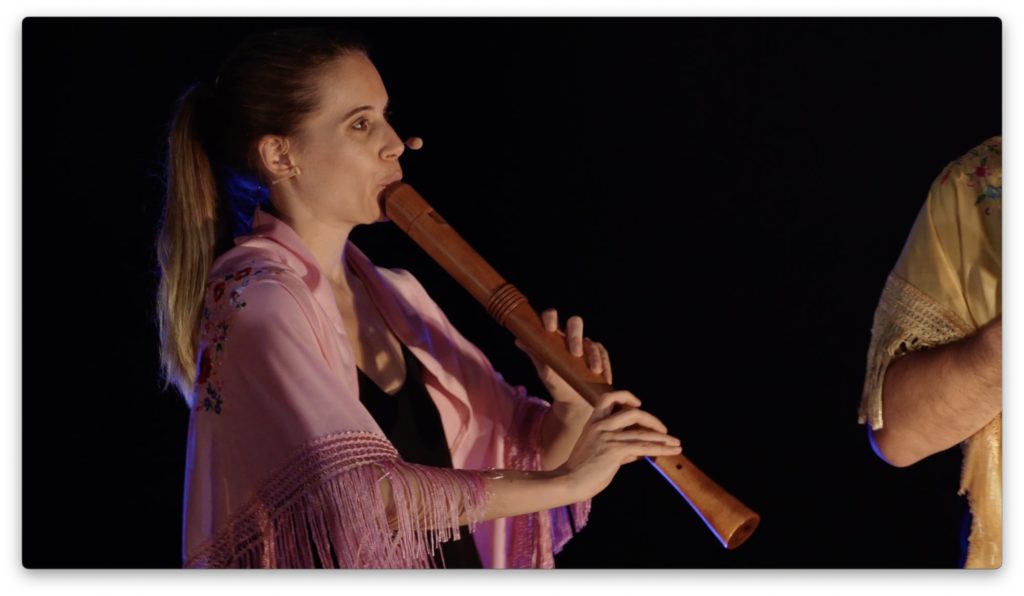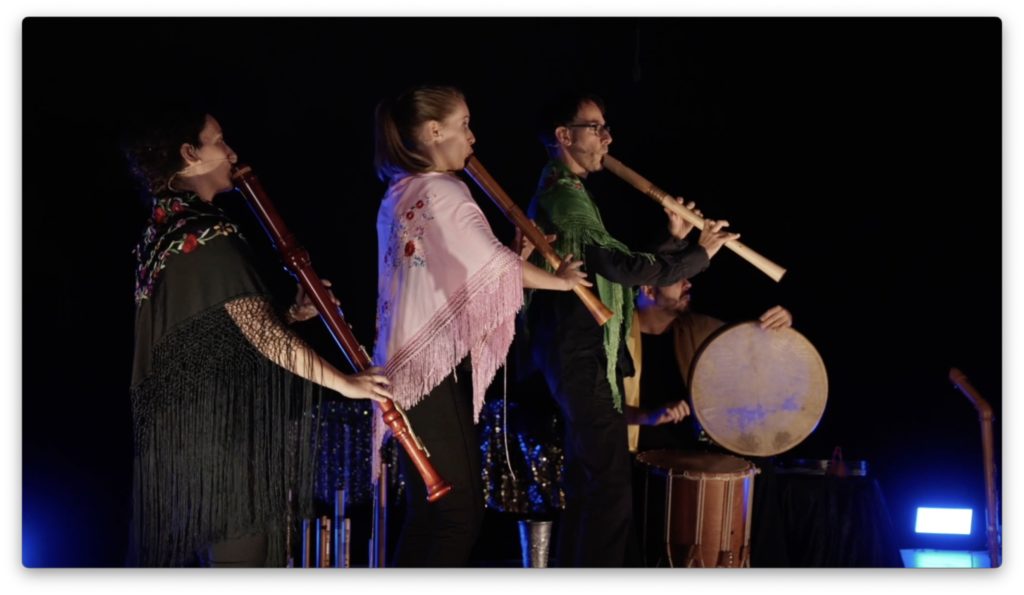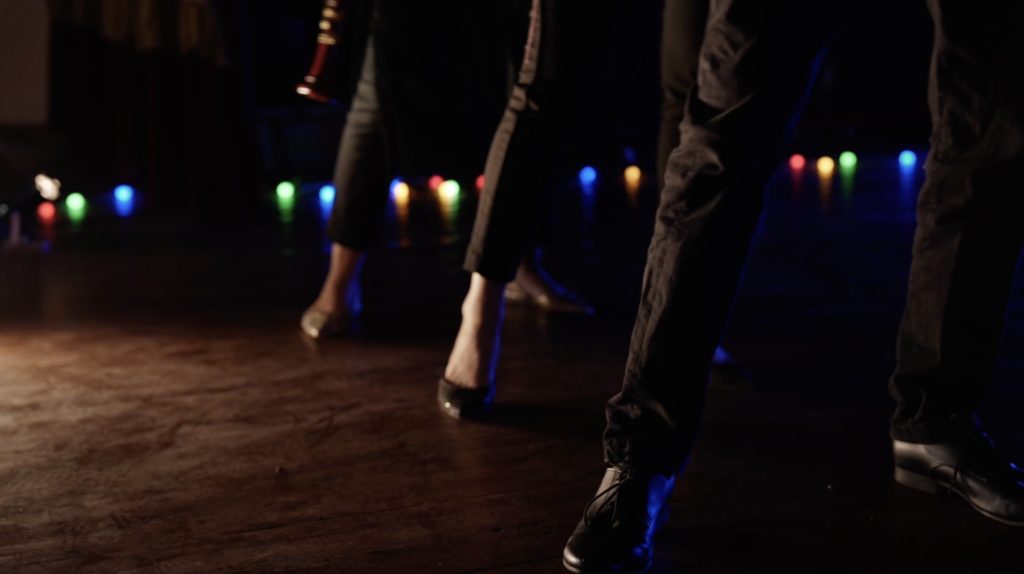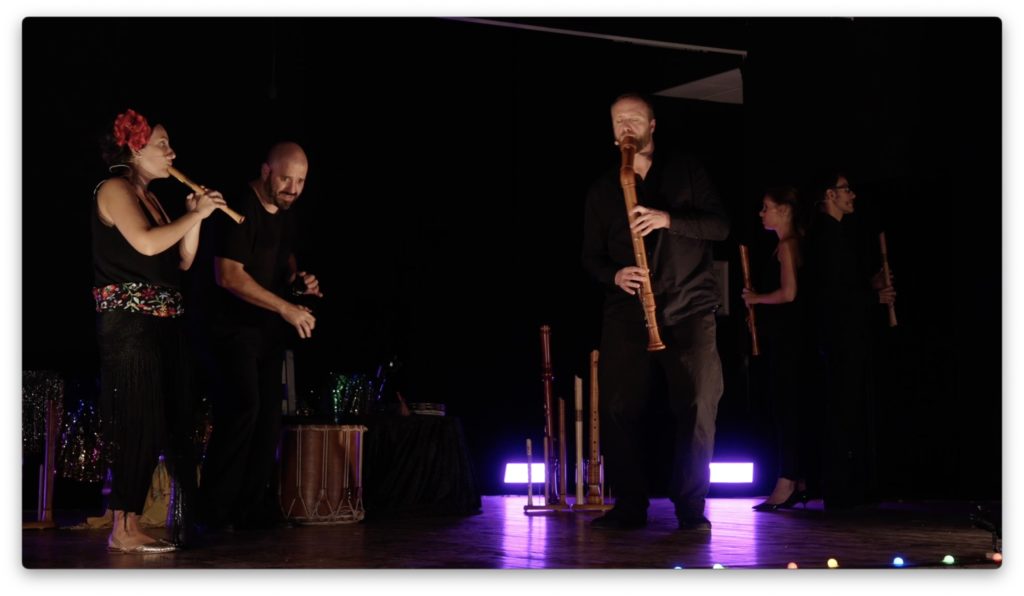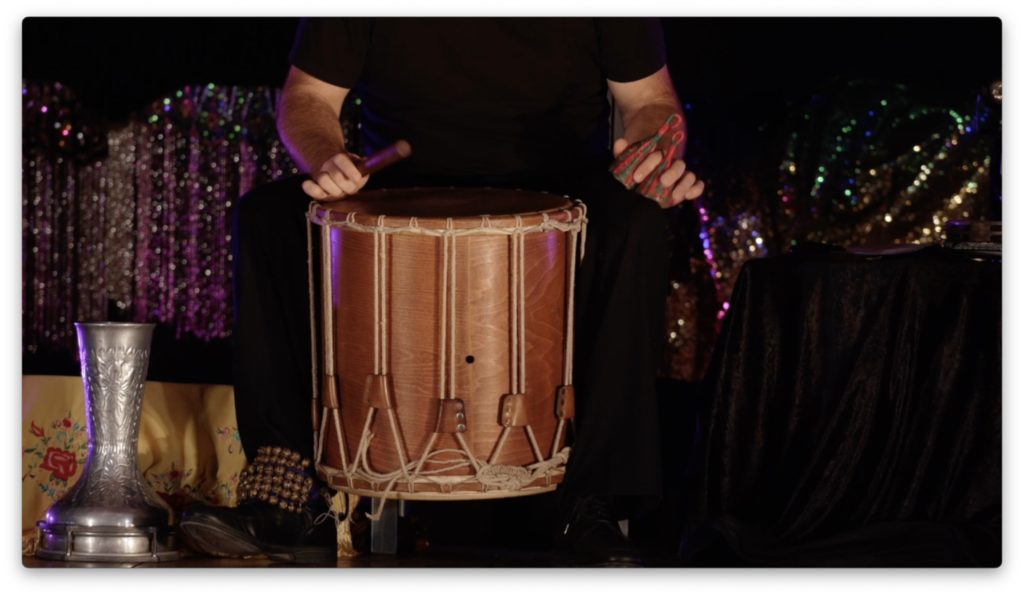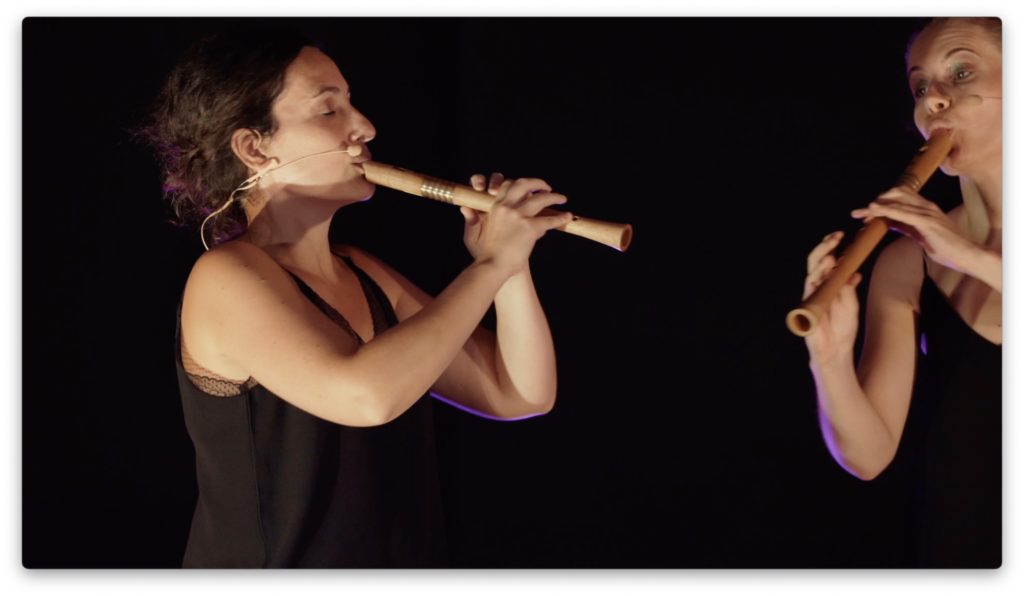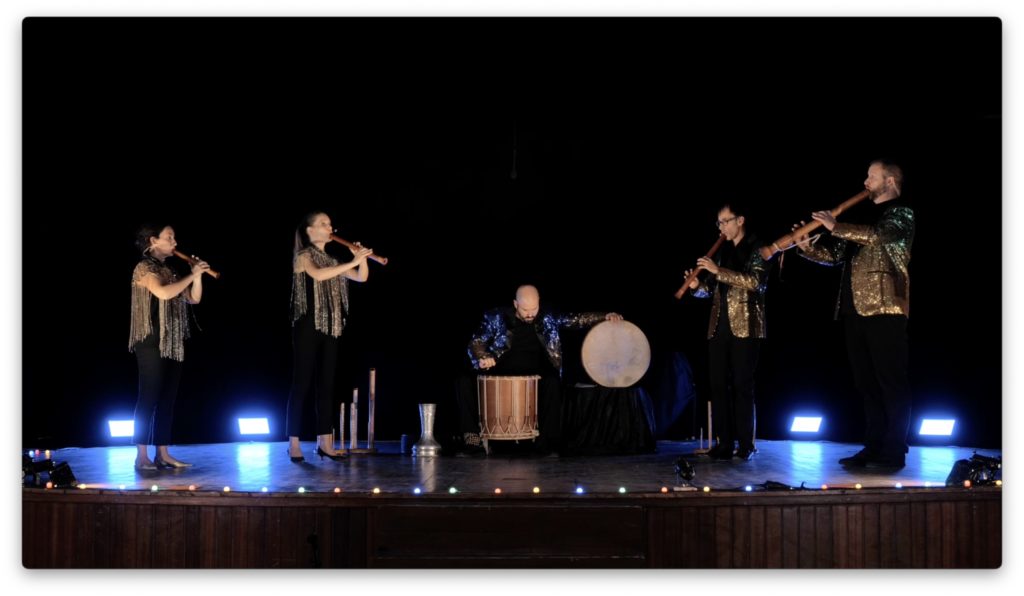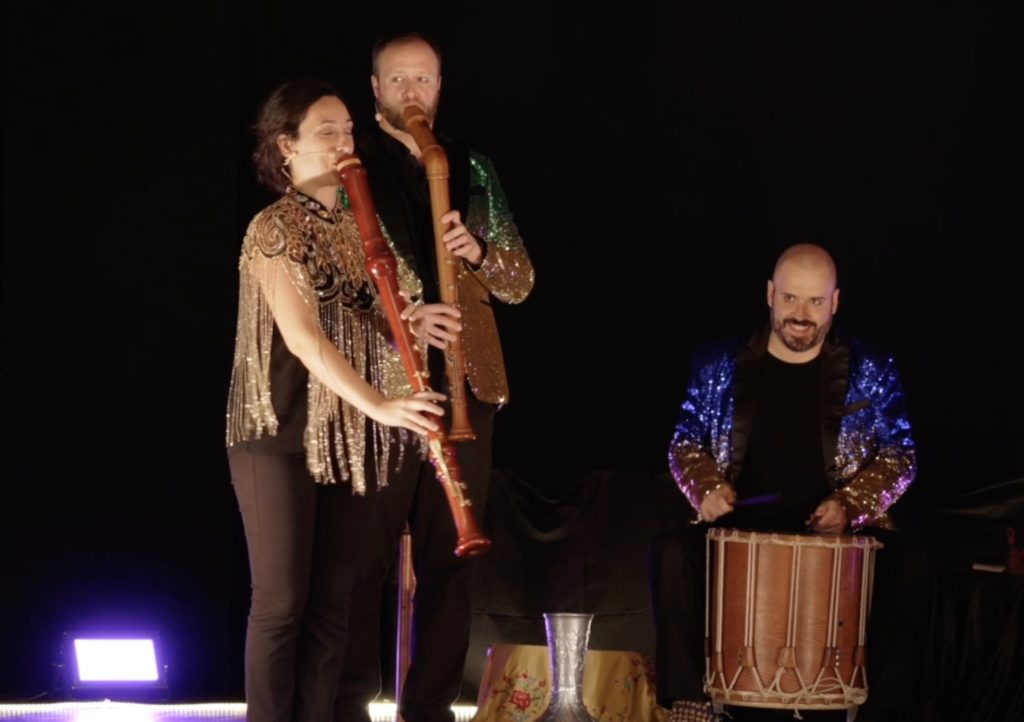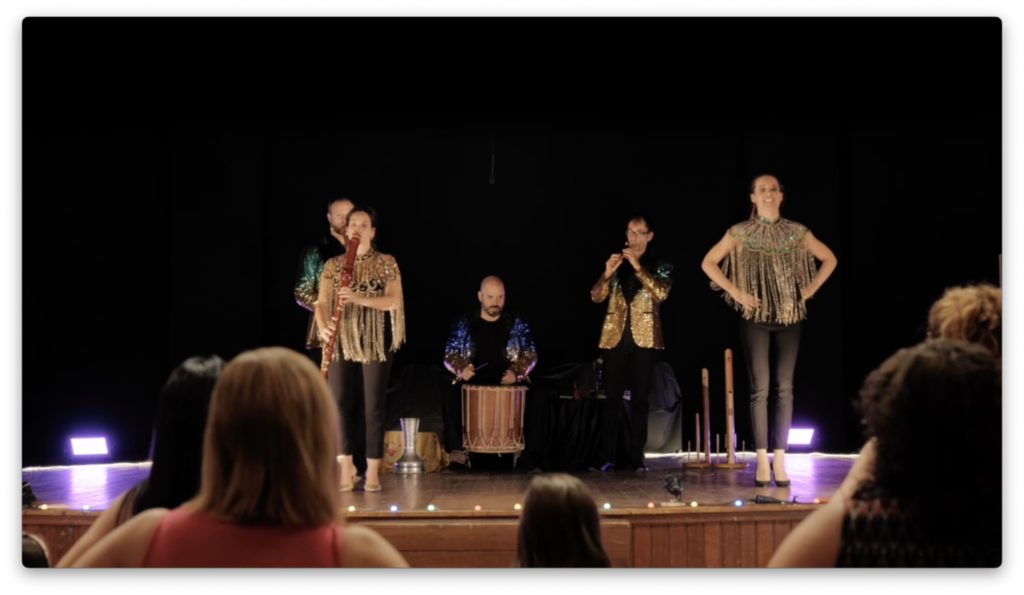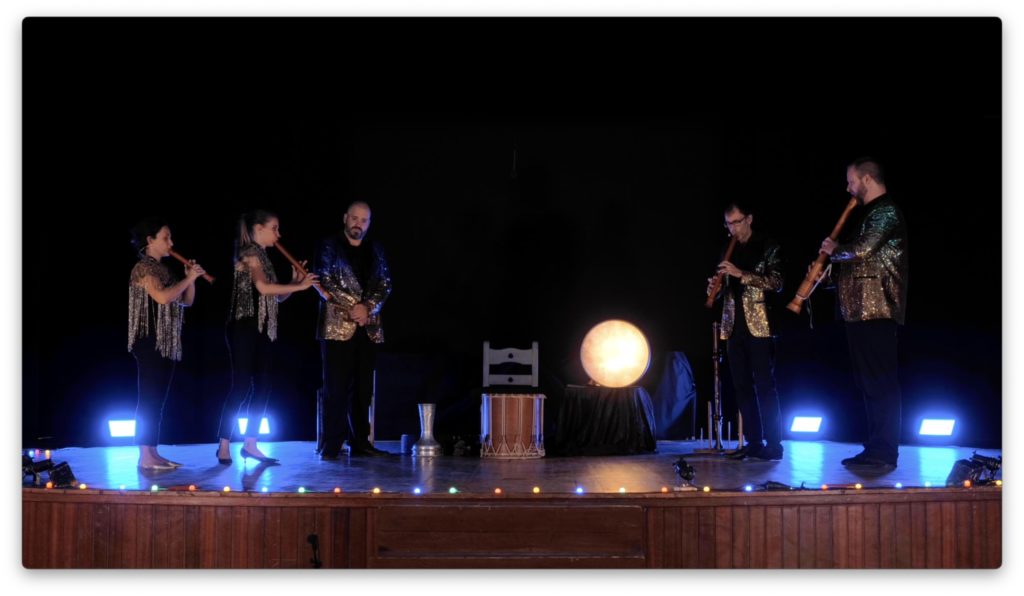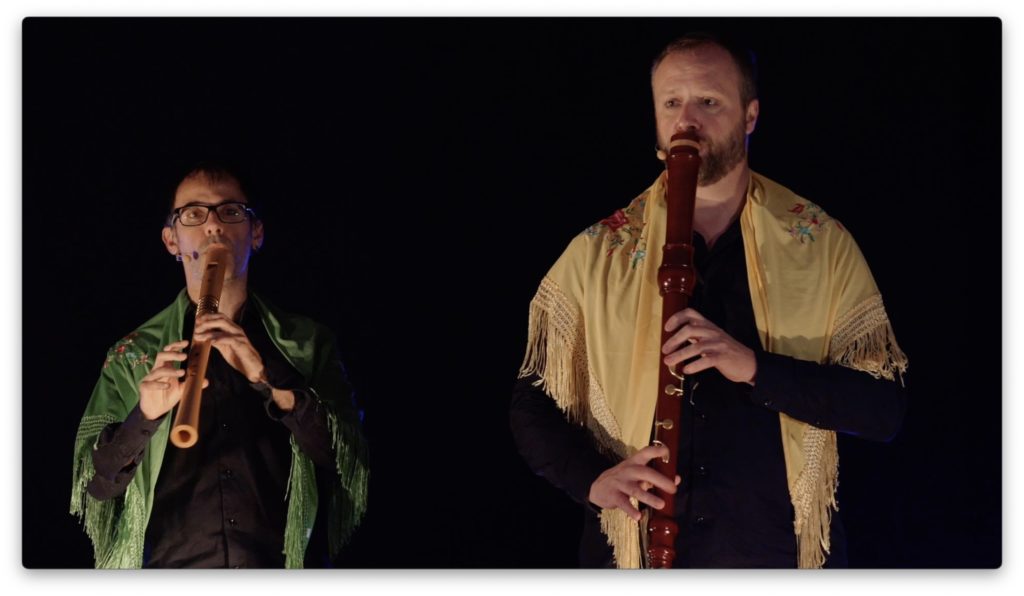
Music and dances
of the Spanish nights
of the Renaissance

¡BAILAMOS! Is a concert where you will hear the BIGGEST MUSICAL HITS of the Spanish Renaissance – pieces and songs that were danced to in Royal courts, as well as by the common people at festivals and celebrations. This is a concert programme of music born in the heart of the Iberian Peninsula and from the Spanish speaking colonies of the New World.
Pavans, galiards, folias, calatas, canarios, pivas, romanescas and passamezzos… the programme of ¡BAILAMOS! is comprised of rhythmic, lively, and popular works, and many versions of these pieces can be found in song books and sources of the epoch. In the 16th century, compilations of pieces were collected in songbooks, which were the ‘playlists’ of the time for Court parties and celebrations.
Windu transforms the stage into a dance floor, and, as in the Renaissance, the DJ of today is replaced with live musicians, with a range of slow and fast dances, catchy melodies, and foot- tapping tunes, and we present them with choreography in pairs and as a quartet. In short –the top songs of the 16th century hit parade! We present fresh and innovative arrangements made by ourselves that would impress and delight any noble person of the Renaissance high society who might attend our exclusive party.
In Spain, they danced – and not just a little! While the peasants engaged in dances and songs with racy lyrics, the court dances were the main entertainment of the nobility and was one of the few occasions when physical contact could be made in public without provoking the gossip of the lords and ladies in attendance. What a time that was – we are still waiting to see our royalty engage in a little dancing in public!
¡BAILAMOS! is not ‘just’ a concert. In keeping with our approach of combining music with stagecraft, Windu once again removes the music stand from the stage, introducing choreography, that will let the audience enjoy even more the different dances of the time, with a modern twist.
¡BAILAMOS! is a show with energy, good music, touches of humour and a lot of connection with the audience; an unbeatable cocktail that will undoubtedly bring smiles, lift the audience’s spirits, and make them want to dance and enjoy life with even more joy.
Let the show begin!
¡Bailamos! Let’s dance!




Eva Jornet, Tamar Lalo, Marcel Leal and Chris Orton, recorders.
- Dani Garay, percusion
- Windu, scenography
- Oriol Ibáñez, light design
- Eva Jornet and Marcel Leal, stage directors
- Laia Vilarrasa, photographs

Juan Pérez Bocanegra (1560-1645)
Hanacpachap Cussicuinin (Lima,1631)
(Codex Trujillo or Codex Martínez Compañón, ca 1788-1790)
Anonymous
Tonada El Congo
(Codex Trujillo from Peru or Codex Martínez Compañón, ca 1788-1790)
Juan del Encina (1468-1529)
Todos los bienes del Mundo, no.265
(Palacio’s sound book or Barbieri’s sound book – Madrid, XIV-XV centuries)
Anonymous
Propinan le melyor, no.57: Villancico
(Colombina’s sound book, Seville, XV century)
Anonymous
¡Ay luna que reluces! no.21
Falalalan falalalera no. 27
(Upsala’s sound book or Duque de Calabria, collected in Valencia, 1556)
Anonymous
Bayle del Chimo
Cachua Serranita
(Codex Trujillo from Peru or Codex Martínez Compañón, ca 1788-1790)
Luis Milán (1500-1561)
Pavana 6
(Libro de música de vihuela de mano intitulado El Maestro ,Valencia, 1536)
Andrea Falconieri (1585/86-1656)
Passacalle, no.15
(Il primo libro di Canzone, Sinfonie, Fantasie, [etc], Naples 1650)
Santiago de Murcia (1673-1739)
Jotta
Folias Gallegas
(Codex Saldívar no.4, Guanajuato – Mexico, ca 1732)
Gaspar Sanz (1640-1710)
Canarios
(Instrucción de música sobre la guitarra española, Zaragoza,1674).
Diego Ortiz (ca 1510-1570)
Romanesca i Passamezzo
Recercada Segunda sobre el “Passamezzo Segundo”
(Tratado de glosas, Roma 1553)
Anonymous (s. XVII)
Jácara “No hay que decirle primor”
(Libro de Tonos Humanos, Madrid ca. 1655-1656)
Lucas Ruiz de Ribayaz (ca 1626-1677)
Marionas, gaytas y zarambeques
Tarantela
(Luz y Norte Musical […], Madrid 1677)
Gaspar Fernández (ca. 1563/1571-1629)
Ese rigo de repente
(Archivo Histórico de la Arquidiócesis d Antequera-Oaxaca, Cancionero Musical de Gaspar Fernández)
Antoni Martí i Coll (1650-1734)
La danza de las hachas
(Flores de música y huerto ameno de varias flores de música, Madrid XVIII century)
Juan Arañés (+1649)
Chacona “A la vida bona”
(Libro Segundo de tonos y villancicos, Roma 1624)





The 16th century saw the publication of a great deal of dance music, although often the published music consisted of arrangements for lute and keyboard that were quite different from the instruments that played the same music at dance halls. Much 16th-century music was not written to be played by a specific instrument, but the composer left the possibility for the music to be played by whatever range of instruments were available at any given moment.
Windu presents ¡BAILAMOS! with arrangements to be played by recorders and percussion; a format suitable for the dance halls and parties of the time and justified by its appearance in several treatises of the period.
In our desire to offer a sound centred in and from historical research and awareness, we will perform ¡BAILAMOS! with a Virdung Consort built by Adrian Brown and inspired by the Sebastian Virdung’s treatise (Musica Getuscht und Angezogen) of 1511, and a consort of ‘Ganassi’ style recorders built by Monika Musch according to Sylvestro Ganassi’s treatise, (Opera Intitulata Fontegara) of 1535.
The two consorts of recorders will be enhanced further by historical percussion instruments, which will present an attractive and energetic sonority allowing today’s audience to enjoy the dances just as the people of the Renaissance did.




















